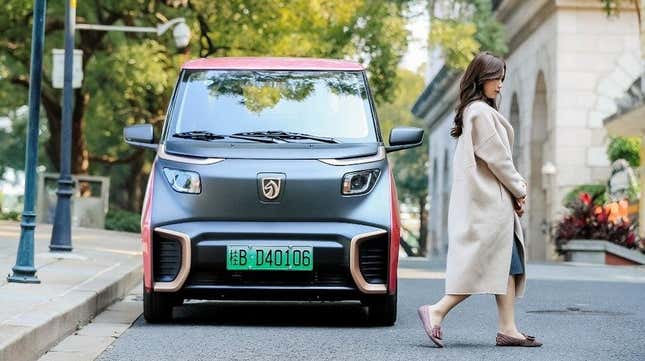There’s two things that we need for a succesful transition from combustion-powered cars to fully-electrified vehicles. Forget about increasing range, or about options on the high-end of the market. The EV transition will pretty much depend on wider infrastructure and lower cost of entry, overall, and the city of Liuzhou has already figured this out.
The southern Chinese city is in the Guangxi region, and it’s home to a big chunk of the country’s EV production. A new report from Bloomberg just named Liuzhou China’s EV capital, which makes it the EV capital of the world for now, and it’s all thanks to cheap electric cars like these:
This city will stay the EV capital until the U.S. can figure out how to copy and apply what it’s doing to boost EV adoption. This is going to take a lot of work, because it involves carmakers and the state working together, but the main takeaways are about offering people cheap EVs and places to charge them.
Once these two are sorted, you get a domino effect that begins with drivers actually buying EVs and ends with lower pollution levels, per Bloomberg:
[Almost] 30% of the cars sold in Liuzhou last year were electric, according to WAYS Information Technology, a Guangzhou-based consulting firm, more than five times China’s average — making the city of 4 million the effective capital of the biggest EV market in the world. Globally, it trails only Oslo for electric-vehicle penetration. Not only that, but Liuzhou’s air and water quality is among the best in a nation synonymous with choking pollution.
That number accounts for nearly one third of new car sales in the city, and, of course, all those EVs need charging stations. Bloomberg reports that there’s 30,000 outlets used for charging now, which are easier to get up and running than sophisticated (expensive) charging banks.
These outlets work just fine for the EVs there, like the Wuling Mini EV and the Baojun E10o. These don’t come with generous ranges, but they’re perfectly fine for commuters in Liuzhou. I suspect they’d be suitable for a lot of drivers in the U.S., too, whose commute averages about 16 miles, anyway.

While big auto in the U.S. (and the rest of the world) was busy worrying about range and phablets, Wuling and the city’s government looked into local driving habits to build a car that would entice drivers, as the report details:
Wuling then studied residents’ needs and driving habits, tailoring the Baojun E100 for a daily commute of less than 30 kilometers (19 miles). The pint-sized two-seater — about half the length of a Tesla Model X and similar in appearance to the Smart car — comes with a similarly small price tag of around $5,000. That not only helps lower the bar for ownership, but reduces running costs such as insurance.
Then, the carmaker built cheap EVs that could be charged from those simple outlets I mentioned, and people flocked to the cars in droves. And before you object about differences in Chinese and American infrastructure, I’ll point out that the Bloomberg report describes a situation that many U.S. drivers find themselves in, as far as commuting goes:
“If you make EVs that are affordable and convenient, then they will replace peoples’ bike, scooter or whatever else they might be commuting on,” said Bill Russo, chief executive officer of advisory firm Automobility Ltd. in Shanghai. “Smaller cities in China typically lack public transport options, and an affordable EV can extend the range of people in a city by extending the commuting range of residents.”
I would say “...typically lack[ing] public transport” sums up the majority of our cities. Again, the importance of low cost cannot be understated. It’s really not that hard; the best EV is the one drivers can buy and that has everything to do with low entry cost. If carmakers are really as serious about the EV transition as they say, they just have to start by selling us cheap EVs and back them up with cheap charging.